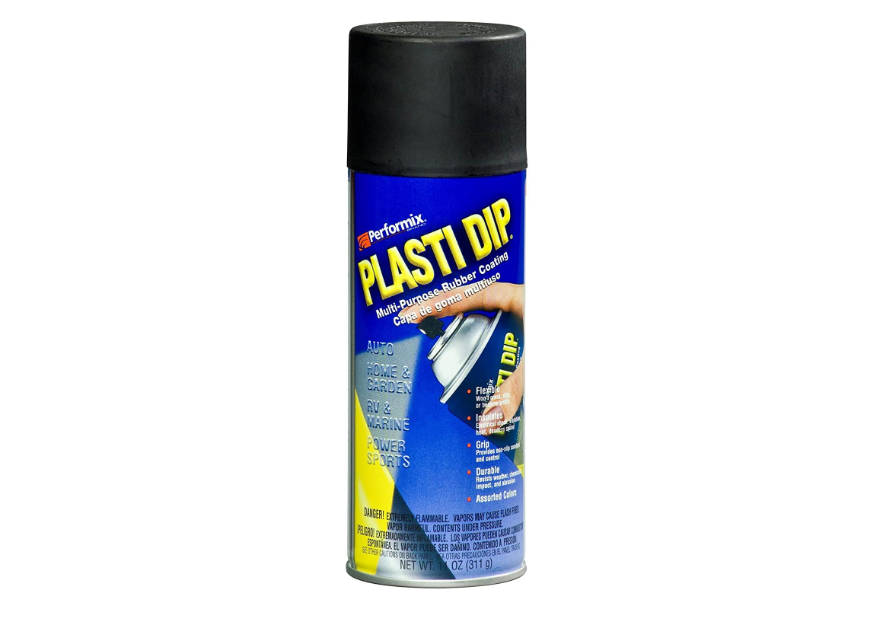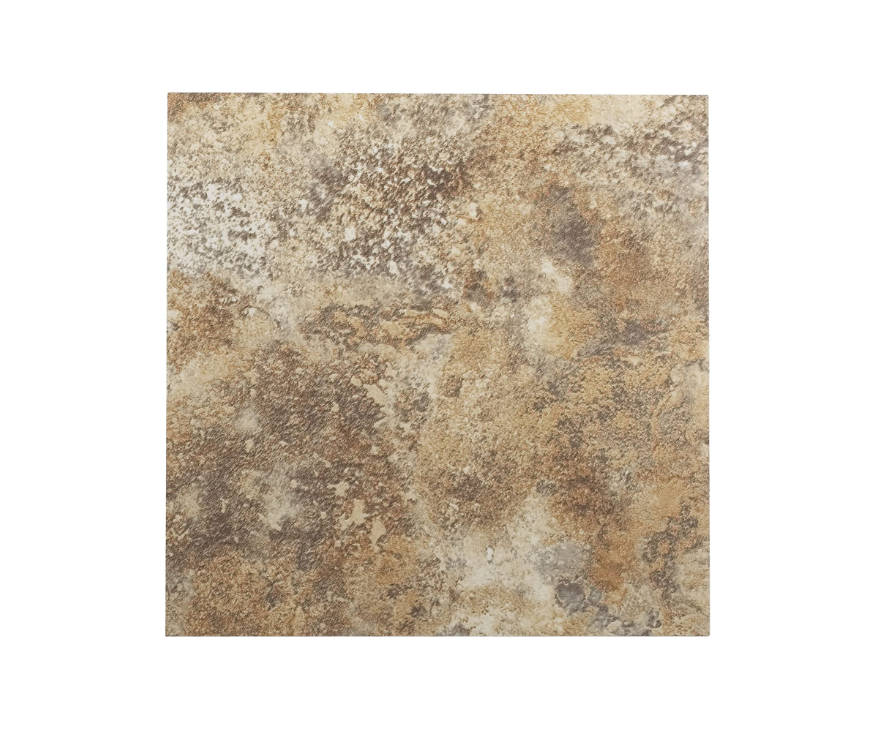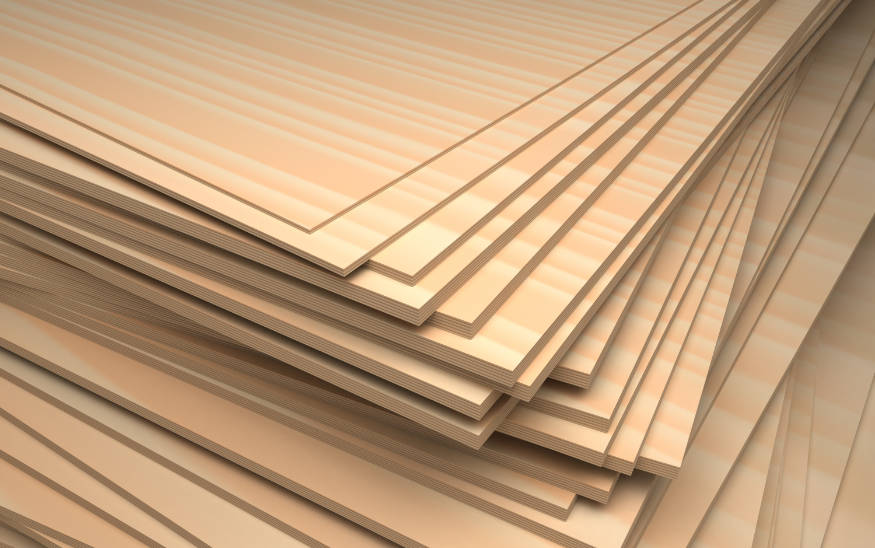You probably know that waterproofing your kitchen cabinets is an essential step in protecting your new investment and avoiding mold in your home. From kitchen to bathroom, any cabinet will benefit from this process.
But did you know that it’s also simple and easy on your wallet?
Read on for some great ideas to waterproof your cabinets!
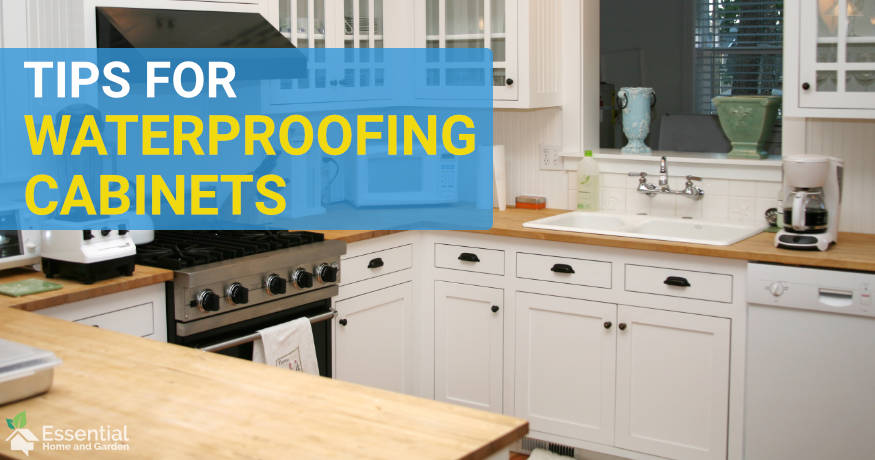
How To Waterproof Your Cabinets
Under Sink Mats
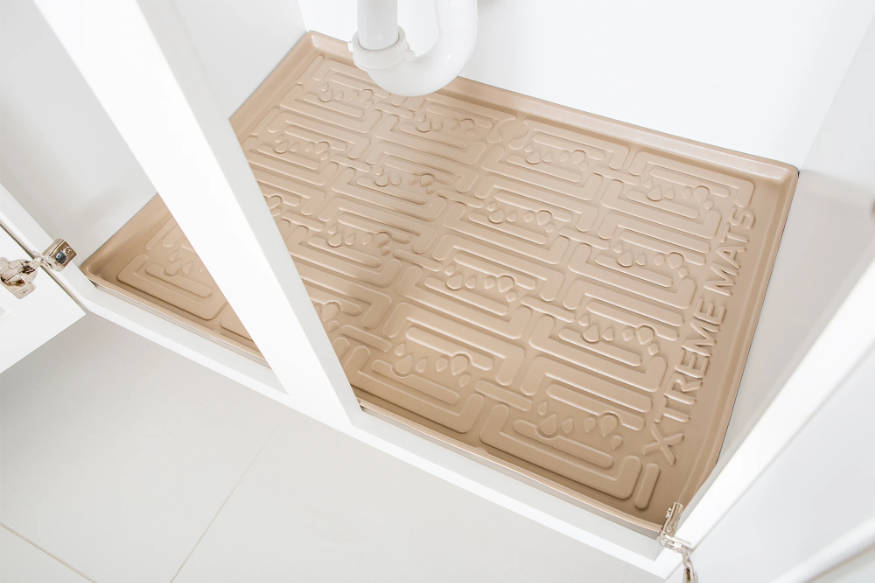
The reason people love using under sink mats so much is because they are easy to install. For the minimal effort you are putting in, you receive an amount of coverage that’s almost unfair in comparison. A good quality mat can hold one or more gallons of liquid. They are also a mess-free way to deal with smaller spills.
There are some special features to look for in a mat when you’re comparing models. If you’re within earshot, some mats have a water sensor with an alarm that can alert you before any damage (or mold growth) has set in. Mats made from an absorbent fabric can be cut to your exact needs. Rubber or plastic mats are flexible and easy to clean.
The installation for these mats could not be more simple. If you have a tape measure on hand, you’re ready to go! Simply measure the inside of your cabinets from left to right for the width (W) and front to back for the depth (D).
Once you have those measurements, you can pick the mat that works for you and find the size option that will work for your cabinets. With mat in hand, you can pop it on the base of your cabinet and you’re ready for any liquid mishaps.
Features to look for:
- Water sensor with alarm
- Liquid capacity
- Material
- Size options
Spray-on Rubber Coating
Rubber coating sprays are a wonder product. They are extremely versatile because they can literally go anywhere. No measuring is required, they are easy to apply and, more importantly, they give your cabinets a smooth and uniform look. Where the rubber coating from a can requires some extra implementation to get the product on, spray cans are as easy as pressing a button.
A key feature to look for is something that will dry fast. You probably want a product that is resistant to heat and won’t crack under pressure. If you’re in a rental space, you may also want something that can be easily removed to get you back to the original surface once you’re done.
Applying rubber coating onto the surfaces you want to protect is fairly simple. Since it’s a spray, you may want to cover the areas you don’t want to be sprayed with a taped piece of plastic or some painter’s tape, depending on the size of the area. Give it a few good coats and you’re ready to move on.
You can see a great write up on this here.
Features to look for:
- Fast-drying
- Heat resistant
- Won’t crack
- Removeable
Use Vinyl Tiles
Another option is to use peel-and-stick vinyl floor tiles. This is not an official method but a solid alternative for a lot of homeowners. Vinyl is a waterproof material and can protect your cabinet. Especially if you already have unused vinyl tiles lying around, you can purpose them here.
This method would involve some effort on your part. You need to cut them to size to make sure they fit snugly. If not, the liquid could get into any exposed area and destroy your efforts.
Depending on the tile you are using, this can be an option that is both attractive and saves you some money. But whatever money you save will be exchanged for time and labor. And, if not done correctly, you could still wind up with a mess on your hands.
Pros:
- Cheap
- Looks nice
Cons:
- Labor intensive
- Needs precision
Waterproof Shelf Liners
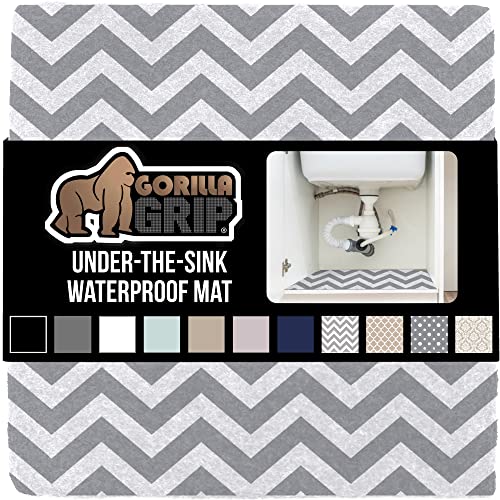
A waterproof shelf liner is a simple option to cover the bottoms of your drawers or cabinets. They are made from a flexible material so they can be cut for the exact size you need. They are an especially good choice for those cabinets that don’t need a heavy-duty mat, but could still see some water action. Another perk is that they keep dust off and are easy to clean off.
One thing to keep in mind is that some of these liners are not waterproof. Make sure to seek out the waterproof liners. There are adhesive options if you want it to stick to the cabinet, or non-adhesive for if you prefer to take it out and clean it every once in a while. You also have multiple options for color and style. Change it out to spice up your look!
These liners come in rolls. Once you’ve measured the width and depth of your cabinet, find a liner that will be big enough to cover the surface. Cut it to shape with a ruler and some scissors. If adhesive, you’ll need to stick it to the bottom of your cabinet carefully. But for non-adhesive versions, just place it down and you’re finished.
Features to look for:
- Adhesive or non-adhesive
- Color and style
- Size
Waterproof Your Wood Surfaces
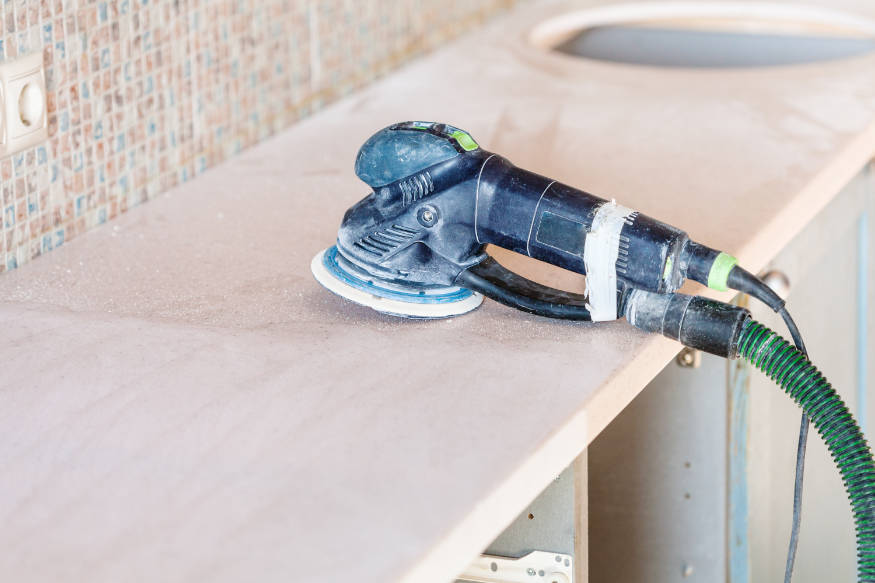
Many people are choosing to incorporate more wood into their kitchens, especially on countertops. If this is you, you may be looking for the best way to protect these beautiful and temperamental surfaces. There is a process for this that takes some time but can get you excellent results.
When waterproofing cabinets, you should seal them first with a lacquer or varnish. Then, apply a coat of waterproof stain-sealant treatment on the cabinets.
To do this, you’ll need to sand and then prime your cabinet’s countertop with a stain. This is so that the surface will retain the varnish and it can effectively waterproof the area. Next, you apply the varnish. Make sure it is food grade if this will be in your kitchen.
To apply the varnish, you will need a dense, 6-inch foam roller. Roll out three or four even coats, allowing the varnish to air dry for 24 hours between coats. Finally, let the varnish be without using it for several days. After this process is over, your countertop will be ready to handle anything with the protection of the polyurethane.
If your surfaces are made of plywood, then there are specific methods you can use to waterproof the plywood.
Features to look for:
- Even coat
- Food grade for kitchens
Replace Leaking Pipes
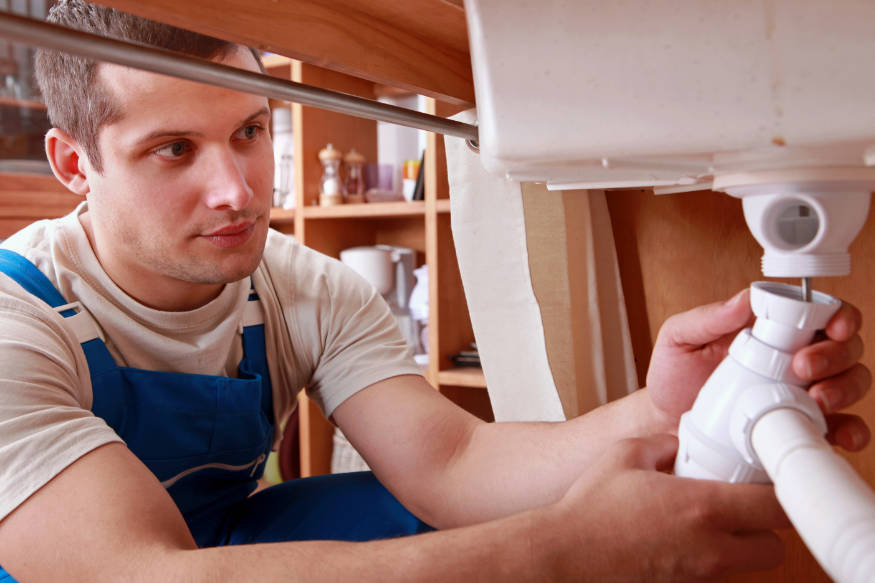
Prevention is the main point here, and one of the best ways to prevent water damage to your cabinets is to replace old pipes. Having old pipes in your home is the most common way that those truly catastrophic spills occur.
This is because old pipes rust and break down over time. Especially depending on the material of the pipe, rust will literally eat away at the metal and create a place for water to escape. In a situation like this, you are asking for damage to your cabinets.
If you are looking for something that will last a long time and offer great protection, spend a little extra for copper or PEX pipes. These are durable options that will save you money in the long run.
Best options:
- Copper
- PEX
Use the form below to get free quotes from affordable, local plumbers.
Caulk Everything
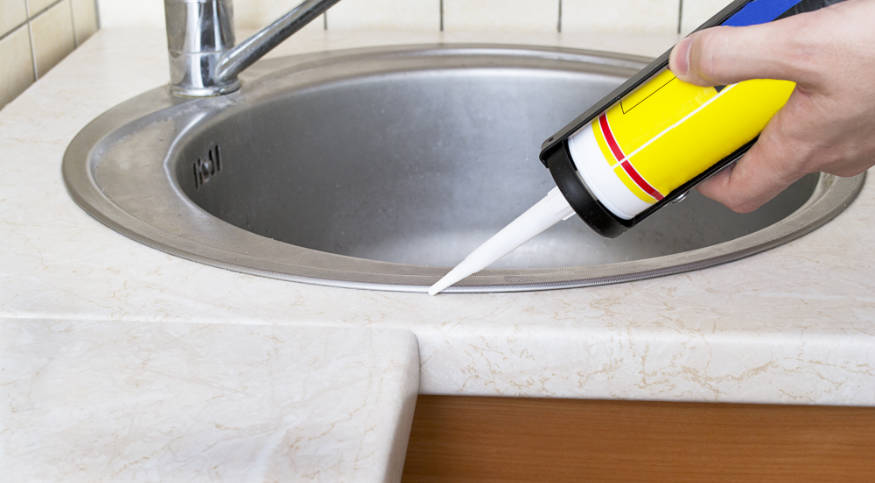
Another way to protect your cabinets is with caulks or sealants. The problem with liquid is that it can enter any space that is available to it, no matter how small. You might have covered everything in mats or liners or tiles, but if some small hole exists for water to get in, you still risk damage.
This is the benefit of caulking. This material can get into tiny spaces and create a barrier for nearly anything. It is especially good for getting into the joints of your cabinet or lining the seams.
You have several different options when it comes to making a selection. Caulks and sealants are nearly the same. The biggest difference is in their thickness. Caulks are a somewhat thicker and more rigid option. Both have some elasticity to them, but sealants are a bit more elastic.
They come made with different materials, such as polyurethane, silicone, and latex. The real difference is what you will be using it for. If the space you are using it in gets a lot of movement, a sealant may be the better option since it is more pliable once it’s dried.
Features to look for:
- Caulk or sealant
- Material
Check The Backsplash
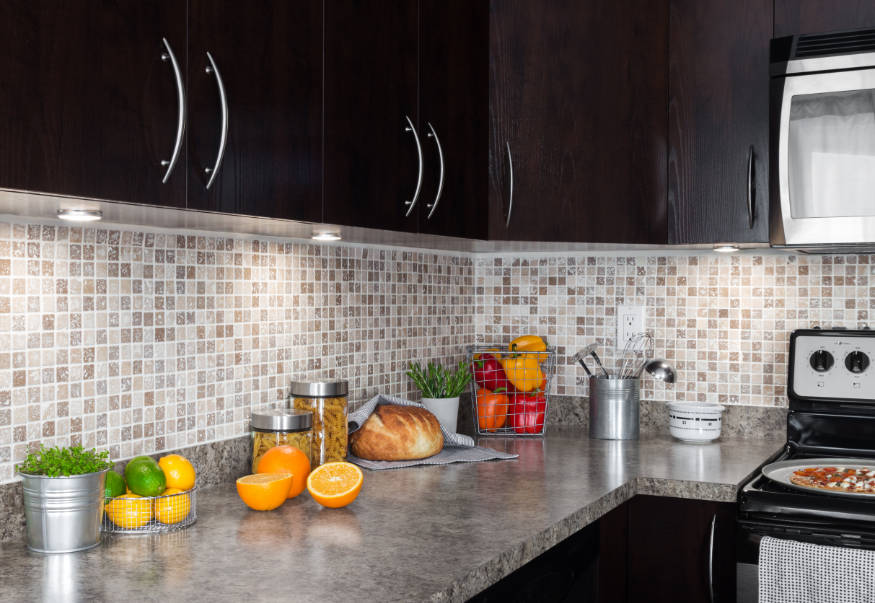
A lot of your possible water damage will come from above the cabinets, on the countertop itself. When those inevitable spills happen, they can seep into any space between your wall and countertop, eventually reaching your cabinets.
The best way to prevent this is to check your backsplash for any cracks or holes. If something exists, grab your sealant and apply it over the damage. This should stop any water from entering the spaces.
Over time, this constant water damage can do a number on your cabinets and even disturb your walls. Stop this before it can start with a simple application of sealant.
Things to look out for:
- Small cracks
- Tiny holes
Use Water Resistant Plywood
Using water-resistant plywood is another helpful way to waterproof your cabinets. It resists moisture and protects against a variety of elements, making it a durable option. It also means it’s both an indoor and outdoor material, in case you need something for your outdoor cabinets.
Plywood is available in many sizes and can be purchased at any home improvement store. It also comes in many varieties depending on your needs, including flexible plywood that can get into tighter spaces.
You can buy plywood that’s already water-resistant, but if you have plywood around, it’s simple to waterproof it yourself. Paint-on or spray-on varnishes of latex or polyurethane will help the material resist any water damage. Once you’ve applied a few coats, you can proceed as normal and cut the material down for your cabinet.
Things to keep in mind:
- Buy waterproof plywood – or waterproof it yourself!
- Find in any home improvement store
Check For Sneaky Leaks
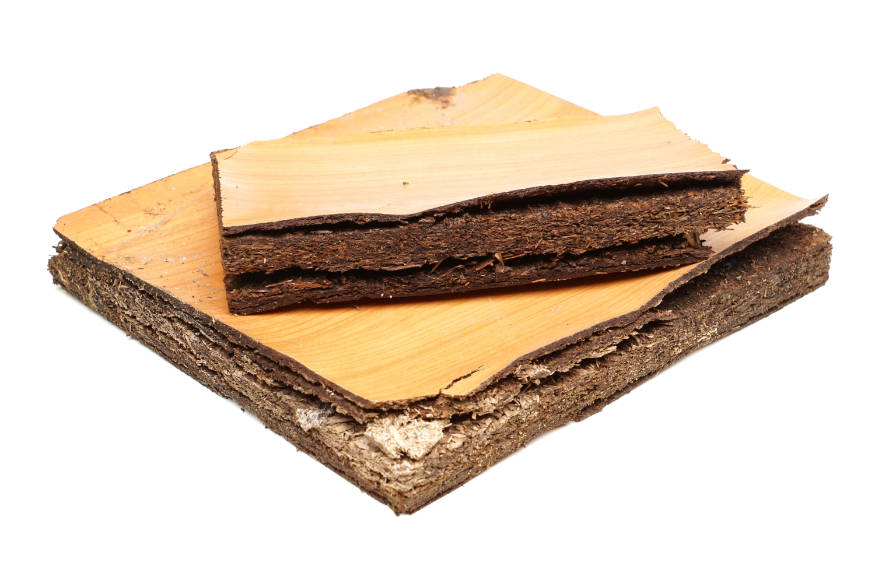
The big leaks in your cabinet are obvious. Water gushing out of pipes or spilling from above is never good, but it’s easy to diagnose. There are some more subtle leaks, though. You may not notice them right away but you’ll notice their effects over time.
The most obvious place to check is on your pipes. Grab a tissue and wipe around on the connections. If it comes back damp, you have a small leak that you need to fix. From here, if you have the know-how you can fix this yourself. Otherwise, get a professional to check the connections.
Your sink rim could also possibly be leaking. To check for this, wet a towel or sponge and squeeze some of the water around the rim of the sink. Immediately after this, look below the sink and see if any water is dripping into the cabinet. Simple actions like this could stop you from having major damage later on.
Look out for:
- Leaky pipe connections
- Sink rim leaks
The Wrap Up
Was this list helpful to you?
Hopefully, you came away with some interesting ideas that make the process of waterproofing your cabinets much easier.
Let us know what you think in the comments – and don’t forget to show us some love and give us a share. Help your loved ones waterproof their cabinets, too!
